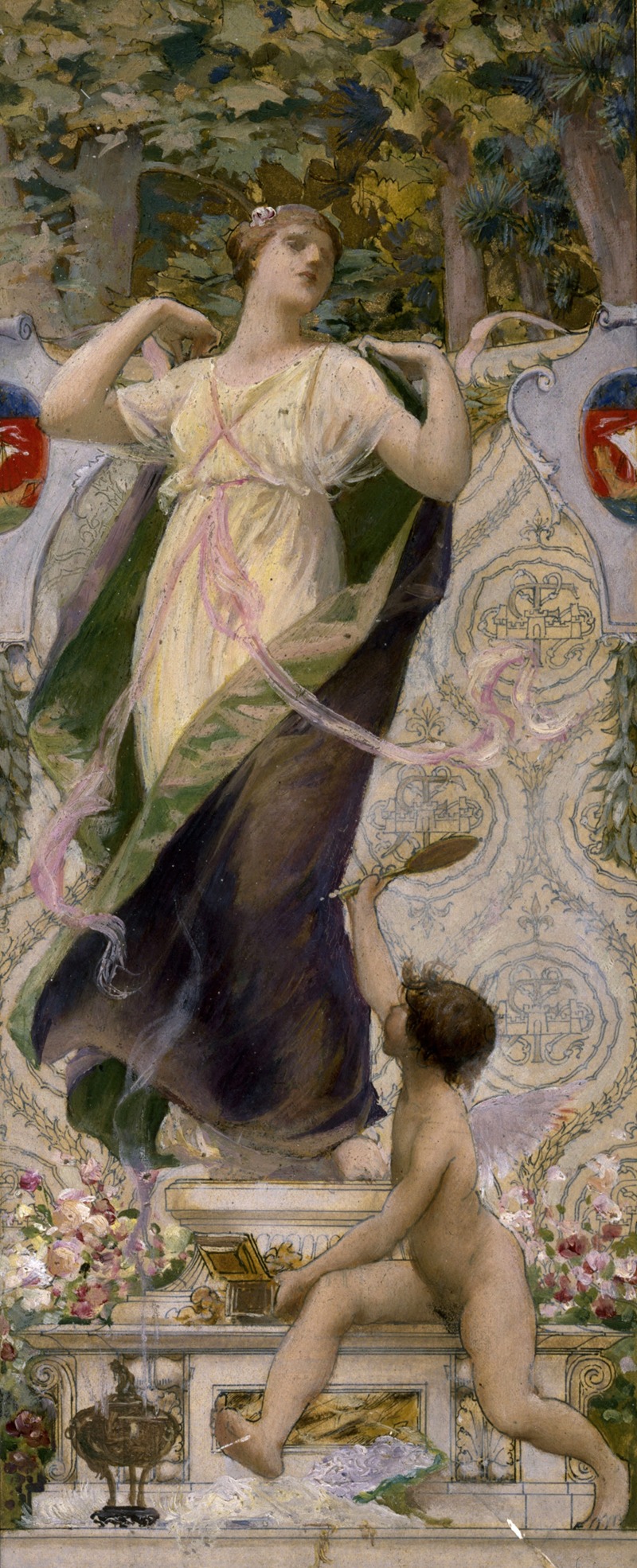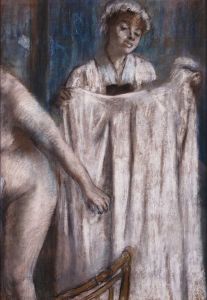
La Toilette féminine
A hand-painted replica of Luc-Olivier Merson’s masterpiece La Toilette féminine, meticulously crafted by professional artists to capture the true essence of the original. Each piece is created with museum-quality canvas and rare mineral pigments, carefully painted by experienced artists with delicate brushstrokes and rich, layered colors to perfectly recreate the texture of the original artwork. Unlike machine-printed reproductions, this hand-painted version brings the painting to life, infused with the artist’s emotions and skill in every stroke. Whether for personal collection or home decoration, it instantly elevates the artistic atmosphere of any space.
La Toilette féminine is a painting by the French artist Luc-Olivier Merson, a notable figure in the 19th-century art scene. Merson, born in 1846, was a versatile artist known for his work in painting, illustration, and design. He was particularly recognized for his historical and religious subjects, often rendered with meticulous attention to detail and a distinctive style that combined elements of realism and symbolism.
La Toilette féminine, created in the late 19th century, exemplifies Merson's skill in capturing the nuances of everyday life through a refined artistic lens. The painting depicts a scene of a woman engaged in her toilette, a common theme in art that explores the private, intimate moments of personal grooming and self-care. This subject matter was popular among artists of the time, reflecting societal interests in themes of beauty, femininity, and domestic life.
Merson's approach to this subject is characterized by his careful composition and the subtle interplay of light and shadow, which lend the scene a serene and contemplative atmosphere. The painting is notable for its attention to detail, from the textures of the fabrics to the delicate features of the woman's face, showcasing Merson's technical proficiency and his ability to convey a sense of realism.
The setting of La Toilette féminine is likely a domestic interior, suggested by the presence of personal items and furnishings that frame the central figure. This focus on the domestic sphere aligns with the broader artistic trends of the time, where artists often sought to capture the essence of contemporary life and the roles of individuals within it. Merson's work, while rooted in these traditions, also reflects his unique perspective and artistic sensibilities.
Throughout his career, Luc-Olivier Merson received numerous accolades for his work. He was awarded the prestigious Prix de Rome in 1869, which allowed him to study at the Villa Medici in Rome. This experience significantly influenced his artistic development, providing him with exposure to classical art and the opportunity to refine his skills. Merson's contributions to the art world extended beyond painting; he was also involved in designing postage stamps and banknotes, further demonstrating his versatility and the breadth of his artistic talents.
La Toilette féminine, while perhaps not as widely known as some of Merson's other works, remains an important example of his ability to capture the subtleties of human experience. The painting is a testament to Merson's dedication to his craft and his keen observation of the world around him. Through his art, Merson offered viewers a glimpse into the quiet, often overlooked moments of daily life, rendered with a sensitivity and grace that continue to resonate with audiences today.
In summary, La Toilette féminine by Luc-Olivier Merson is a significant work that reflects the artist's mastery of technique and his interest in depicting the intimate aspects of human life. It stands as a representation of Merson's broader artistic contributions and his enduring legacy in the world of art.


















